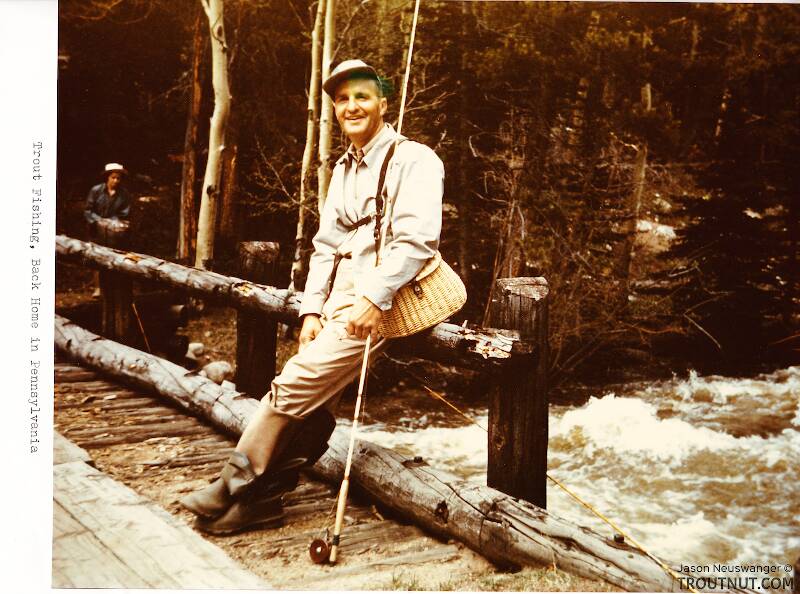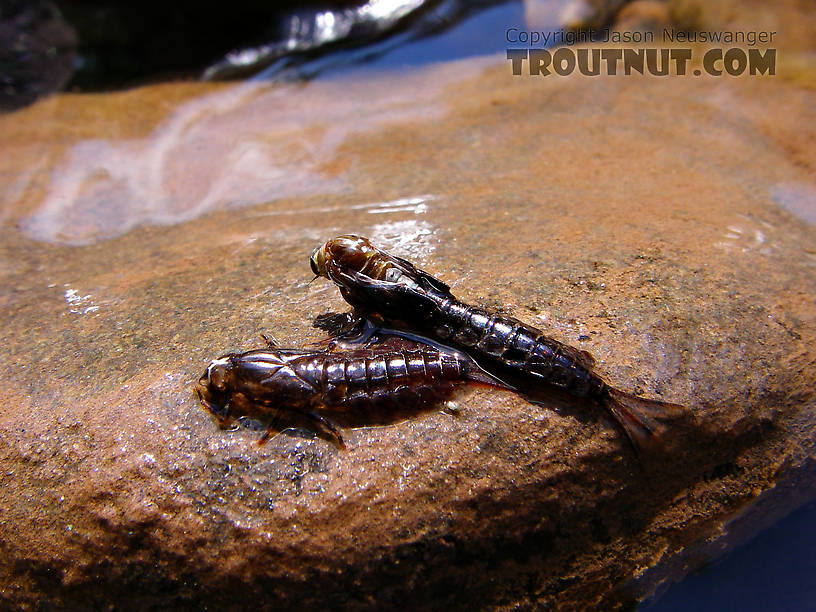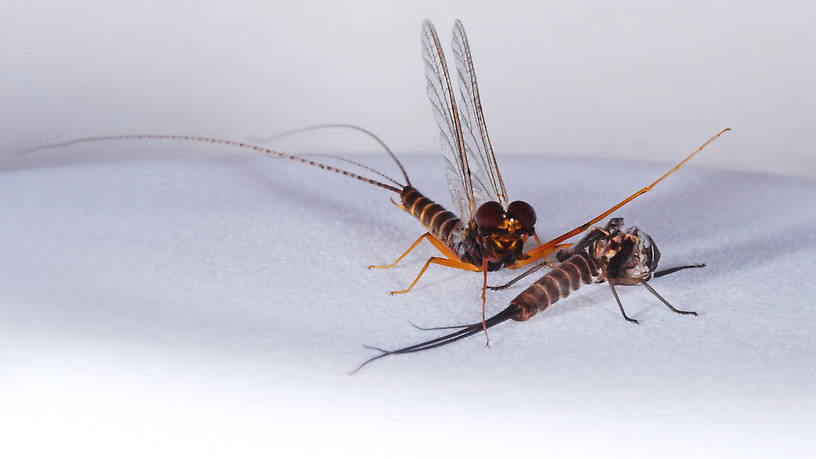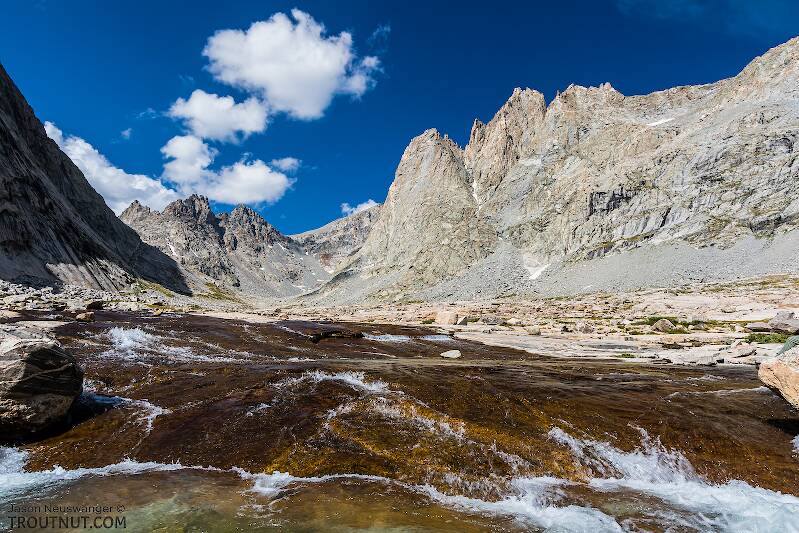
Salmonflies
Pteronarcys californica
The giant Salmonflies of the Western mountains are legendary for their proclivity to elicit consistent dry-fly action and ferocious strikes.

— 4 small yellow spots on frons visible in photos
— Narrow occipital spinule row curves forward (but doesn’t quite meet on stem of ecdysial suture, as it's supposed to in this species)
— Short spinules on anterior margin of front legs
— Short rposterior row of blunt spinules on abdominal tergae, rather than elongated spinules dorsally
I caught several of these mature nymphs in the fishless, tiny headwaters of a creek high in the Wenatchee Mountains.

Feature Articles
Feature Articles
Marjan Fratnik and the History of the F-fly
Guest author Tomaž Modic shares this piece about the history of the "F-fly," a simple but extremely effective fly pattern little known in the states but very popular in its country of origin, Slovenia, and elsewhere in Europe.

Uncle Joe - The "Original Troutnut"
Some recently uncovered stories show why my Great Uncle Joe was the "Original Troutnut," among other adventurous titles.

An Isonychia Nymph Emerging
As I prepared to set foot for the first time in the Catskills' storied Esopus Creek, I noticed an Isonychia bicolor nymph crawling out onto a rock at my feet. I pulled out my handy little camera and started snapping pictures.

Mayfly Dun to Spinner Illustrated
When mayfly duns pop out of the water and fly away, they aren't yet officially "adults." They have one more step before they're ready to mate: to perch on streamside vegetation and molt one more time into the stage scientists call "imago" and we call "spinner." This article shows step-by-step close-up photos of a Leptophlebia cupida (Black Quill) dun molting into a spinner, and it explains what's going on inside the mayfly.

